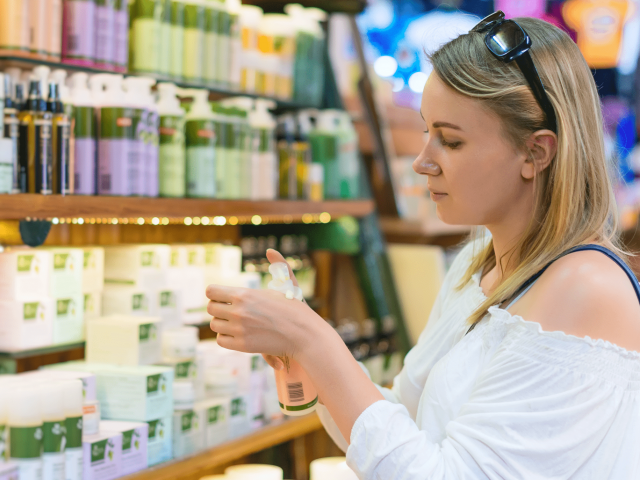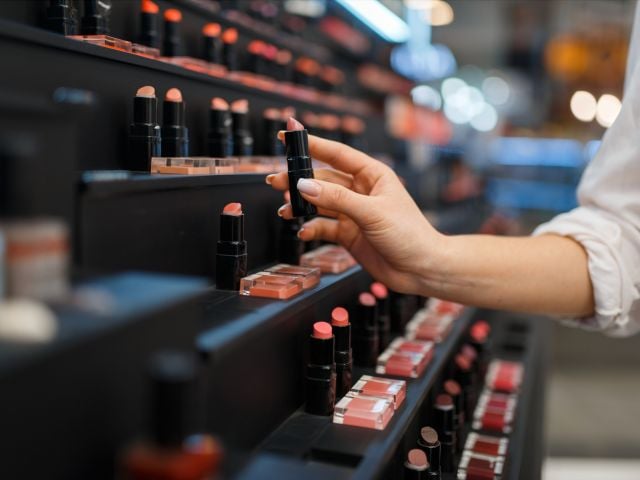
Thankfully, one can interpret spring cleaning in many ways. Some weed overgrown gardens, others dust every square inch of the house. I like to clear out my pantry and cook a mix matched feast with what I find. It's productive but doesn't involve intensive cleaning -- win, win.
Another approach is to purge your personal care products of harmful chemicals. Yesterday we discussed how to do this for household cleaners, but what about your soap, deodorant and shampoo?
Standing alone, these aren't necessarily the most carcinogenic ingredients on the market. But taking into account their ubiquity and health concerns, EWG compiled this list of the 6 ingredients to try to avoid in all personal care products.
Fragrance - Why should I avoid it?
Even though the International Fragrance Association disclosed the 3,163 ingredients used in fragrance, they have yet to disclose testing data supporting the safety of the ingredients, which ultimately leaves consumers in the dark. There are a few we know to be problematic (like musks, phthalates and BHA), but what about the scores of other ingredients with no safety data?
Also, any given product with "fragrance" on the label could, in theory, have any number of the 3,163 ingredients in it. Cutting one word from your ingredient list could mean cutting your exposure to hundreds of chemicals with unknown health risks.
Parabens (methyl-, propyl-, and isobutyl) - What are they?
It's not the first time you have heard about these preservatives in this blog series. They're used to keep bacteria from forming in products.
Why should I avoid them? They have endocrine disruption concerns. EWG recognizes that commercial sale of cosmetics requires the use of preservatives. Lest we trade a devil we know for a devil we don't, we need to know the safety of the replacement ingredients to eliminate concern, just as with BPA-free bottles and PFOA-free pans.
PEG & ingredients that end with "-eth" - What are they?
>p>In personal care products (like shampoo, body wash, liquid soaps) these raw ingredients are reacted with ethylene oxide, a known human carcinogen, and added to product formulations to make the ingredients softer on the skin. Ingredients ending in "-eth" (e.g. sodium laureth sulfate) and ingredients including the word "PEG" (e.g. PEG-4 Laurate) are what you should avoid.
Why should I avoid them? The ethoxylating process contaminates the product with a suspected carcinogen, 1, 4-dioxane. The product is then purified to remove the 1, 4-dioxane, but this process isn't perfect, leaving behind trace amounts of the contaminant. A 2009 study from the Campaign for Safe Cosmetics highlights this disturbing and common problem.

Triethanolamine (TEA) - What is it?
TEA is kind of a jack-of-all trades for personal care products. It allows different ingredients to adjust to one another, enabling them to mix harmoniously, more or less.
Why should I avoid it? It can be contaminated by nitrosamine, a probable human carcinogen.
Hydroxy Acids (AHAs, BHAs, lactic & glycolic acid) - What are they?
AHA = Alpha Hydroxy Acid, BHA = Beta ... these are advertised ingredients found mostly in skin care products, such as anti-aging creams and acne treatments. They are very harsh on the skin. Their job is to break bonds on the skin's outer layer, so it can reform to be more taught.
Why should I avoid them? After finding out what they are, it's no surprise to say they are strong -- violently strong. The outer layer of the skin is weakened when exposed to hydroxy acids; it's then more susceptible to damage from other hazards, such as ultraviolet rays. The US Food and Drug Administration (FDA) has examined them, you can find their information here.
Triclosan & Triclocarbon - What are they?
Pesticides, believe it or not. They are added to personal care products for their antimicrobial properties.
Why should I avoid them? They don't add any benefit to products (i.e. they don't fight germs any more than conventional soap), they're known thyroid toxins and persist in the environment and in our bodies for a long time. In fact, it's hard to think of a reason to use them. To quote EWG Senior Analyst (and father of two kids) Sean Gray: "Get 'em outta your house!"
This is part 4 of our "Not in My Cosmetics" series. The first three are:
(Thanks to Flickr CC & Reenie-Just Reenie for the flower)



